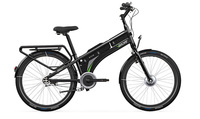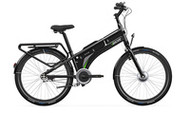Electric Bicycles
20th Apr 2015
Electric Bicycles, Lithium, Vehicles, Pedelecs, Power Bikes, E-Bikes, Mopeds,
Motor Scooters, Motor Bikes, Motor Cycles, MoDe, Hybrid
Whatever happened to my good ol-fashioned heavy duty Schwinn I used to deliver newspapers? The one I had to pedal with all my might. You’ve probably already seen hipsters and our tech savvy subculture buzzing all about town and in and out of traffic. Through the park and right down the sidewalks. What are they? A challenge is the short answer. Governments at all levels are struggling to properly classify these machines that transport us like a bicycle but possess a power source unknown to us anti-hipsters.

The power source? A lithium battery. In all shapes and sizes. To complicate things, is it an e-bike? A power bike? Pedelec? Moped? How fast do they go? These are the challenges for governments regulating vehicles, traffic, pedestrians, and other conveyances typically found in Gotham city.
In our world, its easy. Well, almost easy. Now we throw in 49CFR, IATA, and the IMDG Code. For the most part we get away with one word – Vehicles. Unless of course we’re talking about 49 CFR. They throw in, Battery Powered Vehicles, Battery Powered Equipment and Special Provisions which tell us the difference between a vehicle and equipment (a mobility aid versus a lawnmower). And if one of our Jetson scooters has an engine other than a lithium battery, we have to use the entry, Engine internal combustion, or Vehicle, Flammable Liquid Powered, or Flammable Gas Powered. And if that’s not enough, any one of these entries send us to 49CFR, 173.220. Here we find soothing relief from the regulations when transported by ground in the United States. By air or ocean, we got a new ballgame.
By Air, we also use any one of the above entries, all of which are accompanied by a myriad of Special Provisions. Leading the list, and most important to us is Special provision A21. This Special Provision tells us what a vehicle is and when we should these “vehicle” entries. Then it says, if you have equipment, you should be using, “Lithium Batteries Contained in” or “Packed with Equipment.” UN3481 or UN3091 as appropriate. If we started with these entries we also find a myriad of Special Provisions. On this list, we find Special Provision A185 which tells us, if we’re shipping a vehicle powered only by a lithium battery, we must use the entry, UN3171, Battery – Powered Vehicle.
The IMDG Code for transport by Ocean also serves up the multiple entries in the List of Dangerous Goods. Here, in your face, in Column 17, they distinguish the difference between Battery Powered Vehicles or Equipment (UN3171) and everything else (UN3166). Coupled with the Special Provisions and starting off with SP240, it makes it clear if we have Lithium Batteries Contained In or Packed With Equipment, we should be using the entries, UN3481 or UN 3091 as appropriate.
So whatever you choose to call these futuristic teleportation machines, the regulations in our transport world do a pretty good job telling us the bicycle we knew as a kid is now called a vehicle. So when choosing your next training program be sure Battery Powered Vehicle UN3171 is included in the curriculum. I wonder how the Nimbus 2000 will fit in?
DGI Training


